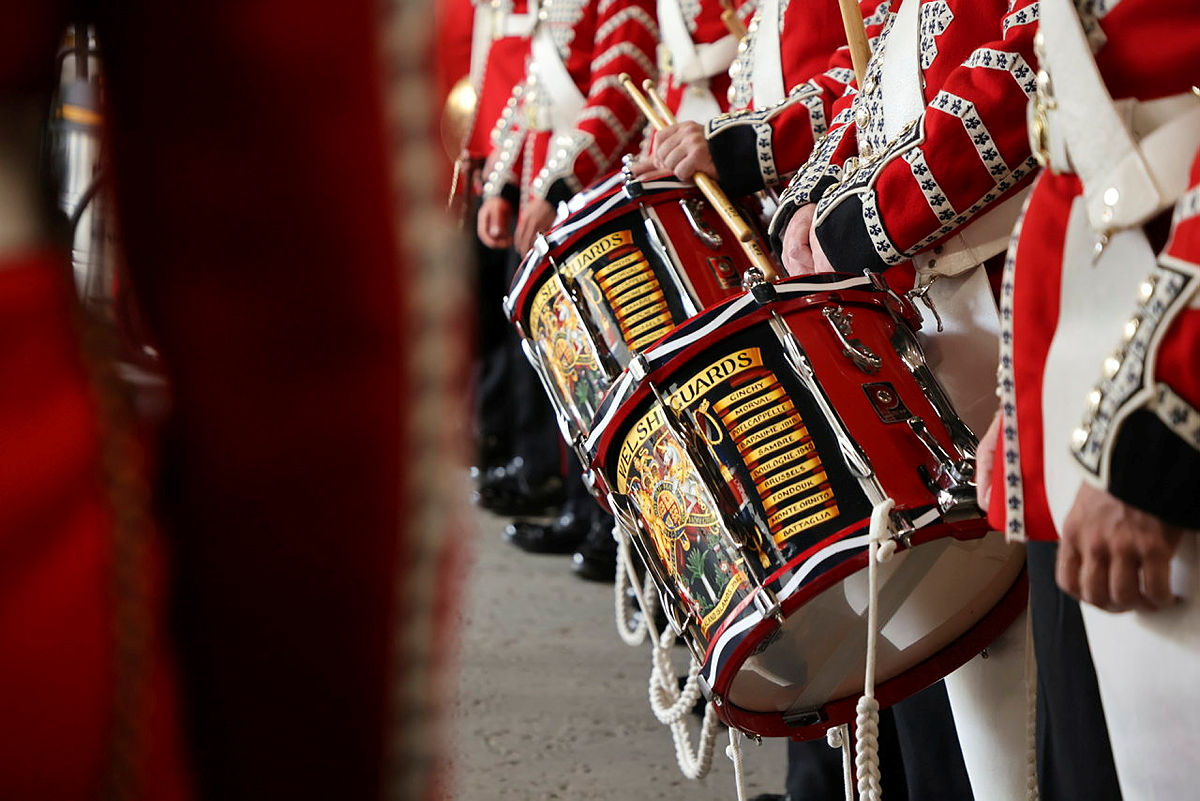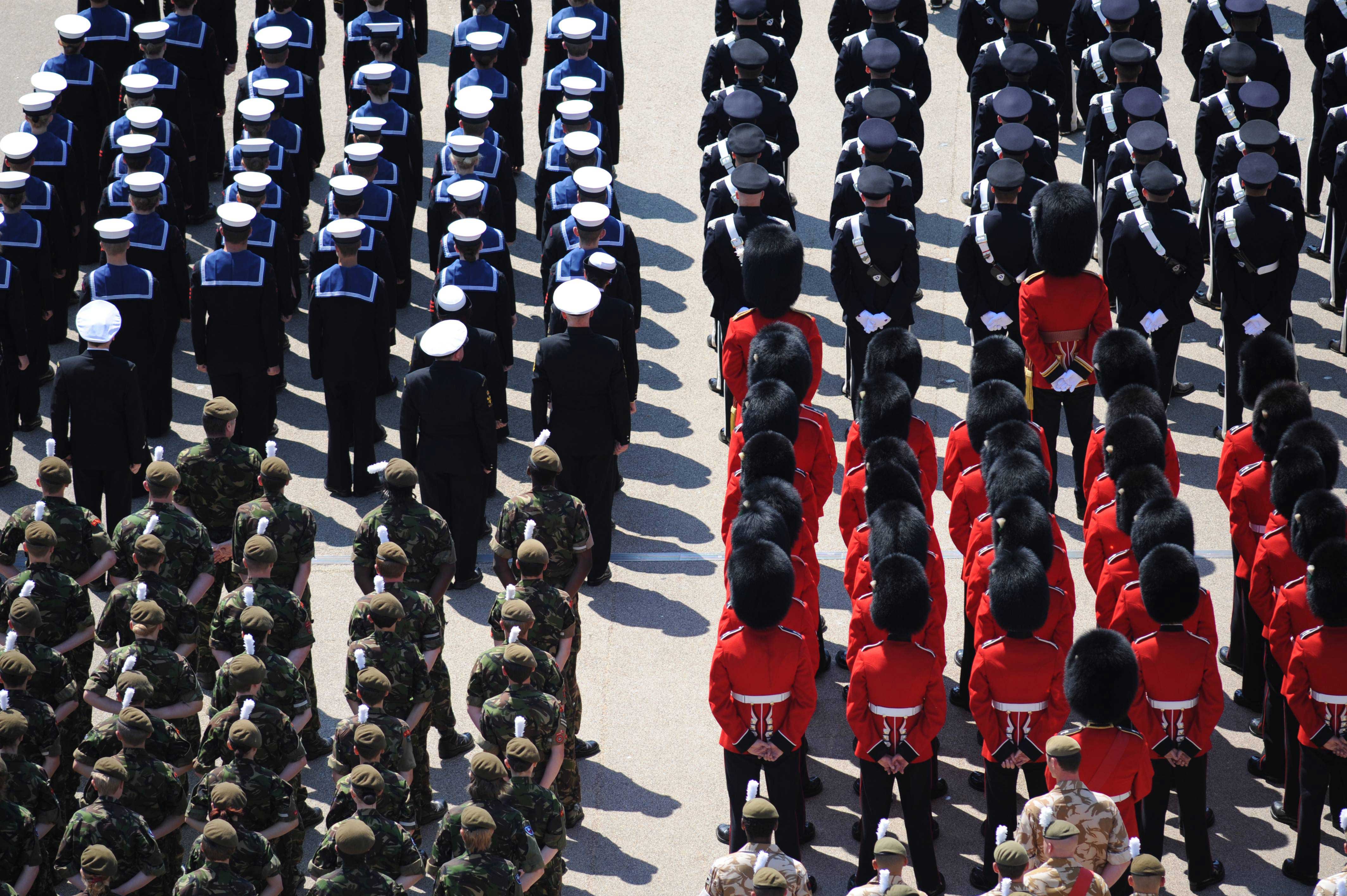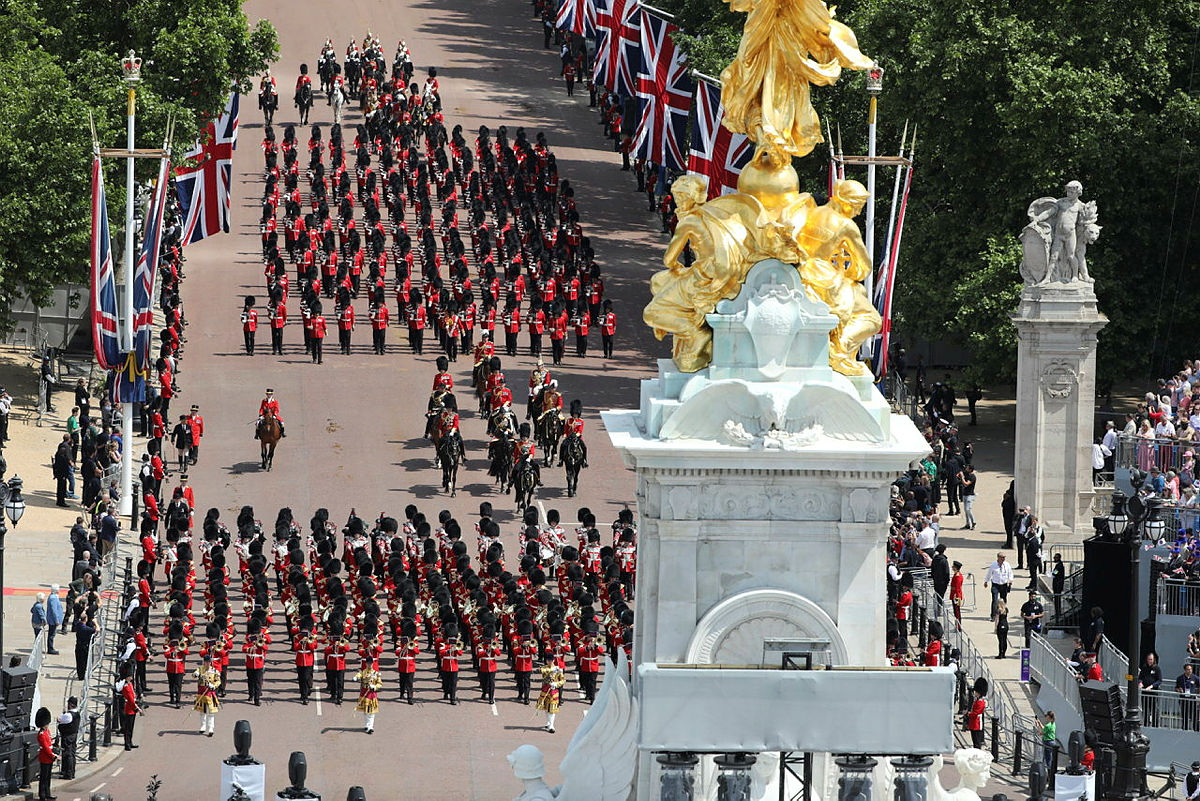Music is an important and influential part of military life and is seen as a strong source of morale. Musicians support the regiments at ceremonial events and consist mostly of wind and percussion instruments. As well as appearing at parades such as the Remembrance Day Parade, military bands have also been known to be deployed on operations to Iraq to serve as army reserve soldiers.
There are two types of historical traditions in military bands. The first uses field music instruments such as drums or trumpets. This type of band was used to control troops on the battlefields. Long before the high-tech battlefields of today, signalling in camp and on the field was carried out by the beating of a drum and the sounding of the trumpets.
The second tradition uses brass and woodwind instruments. Bands were formed by soldiers, and each regiment in the British Army maintained its own military band. Until 1749 bandsmen were civilians and then at a later date became enlisted men who accompanied the regiment to provide music to raise the morale.
The oldest British military band is the Royal Artillery Band which dates back to 1557. After 1994 the number of bands was reduced from 69 to 22. The Regular Army Bands in the British Army are part of the Corps of Army Music. They range from traditional marching bands to concert bands to small string orchestras.
The Corps of Army Music (CAMUS) is dedicated to the provision of military music. Bands such as the Band of The Household Cavalry, The Royal Artillery Band, Band of the Scots Guards and the Band of the Queens Division make up the bands of the corps.
Military bands vary in function, from troop entertainment to public relations to playing at special events. They play ceremonial and marching music and the modern day military musicians perform in other styles such as rock and roll.
View our Corps Of Army Music Items here




